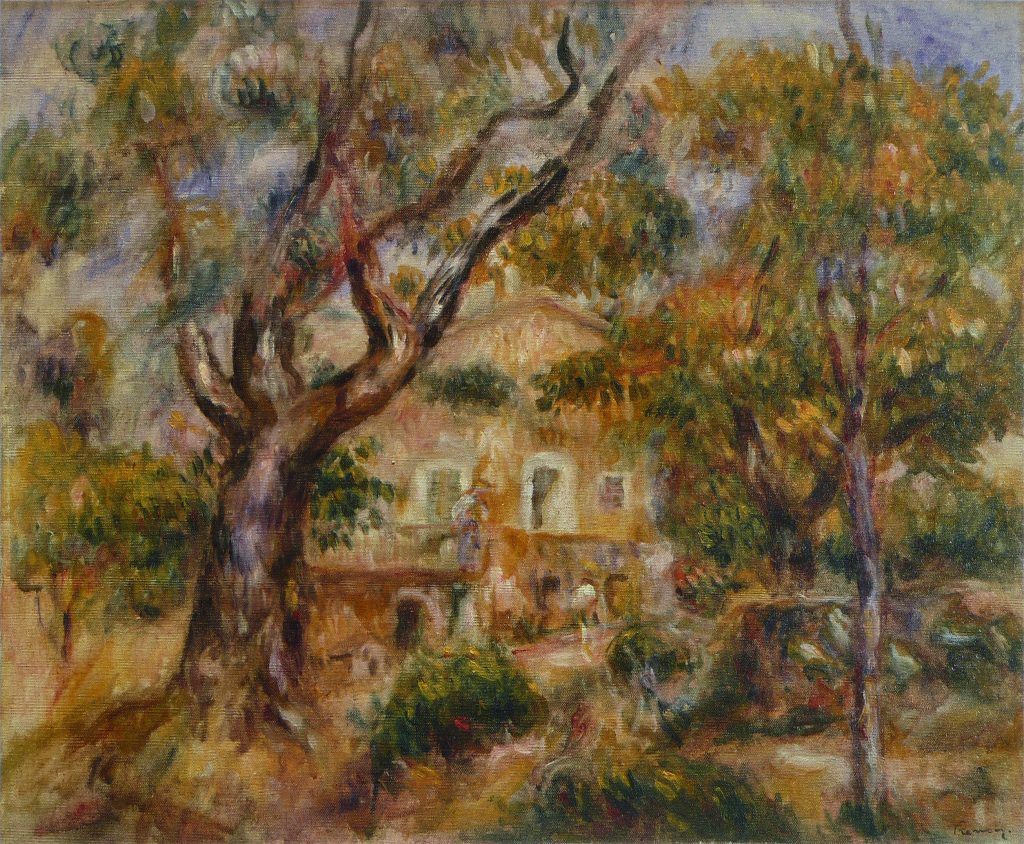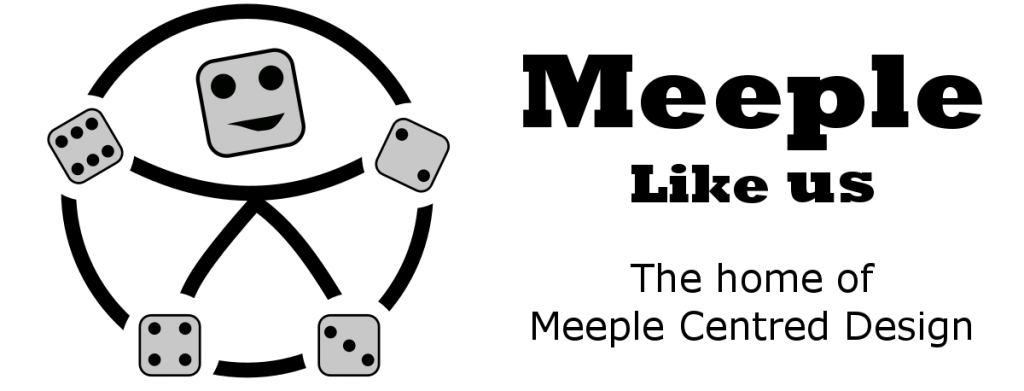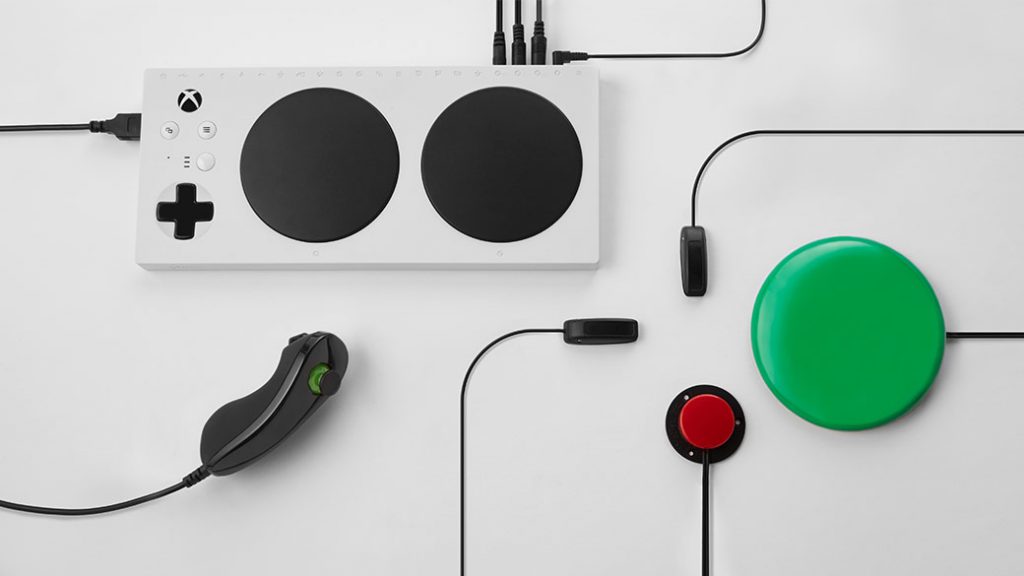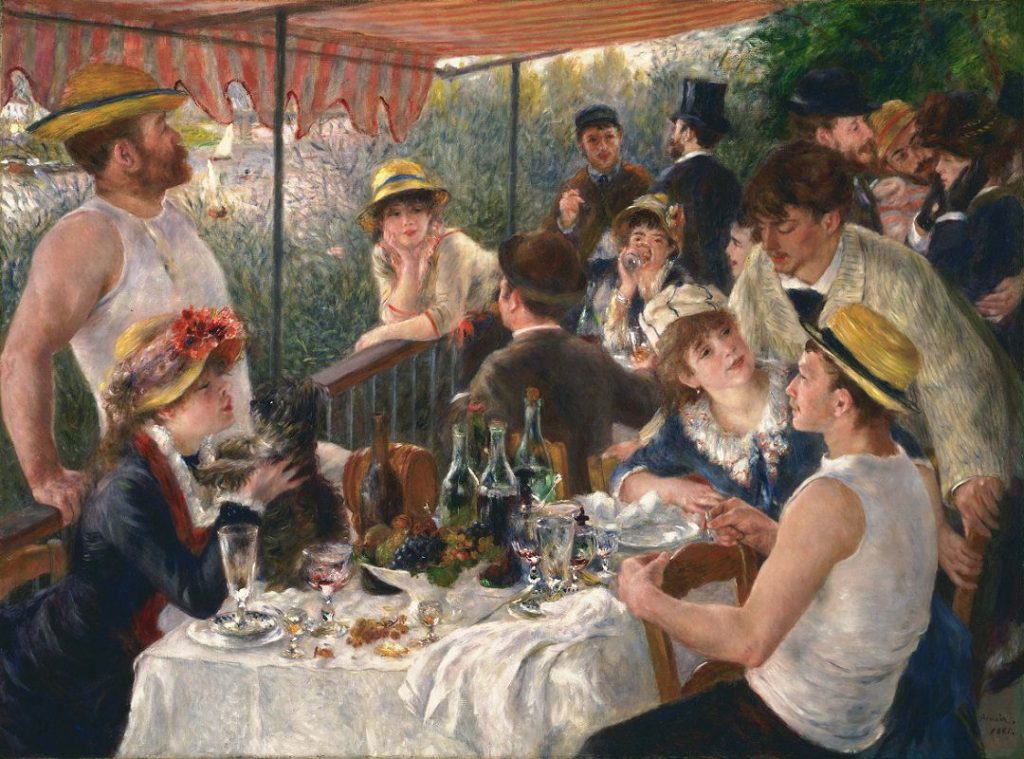Roll for Insight: Wargaming & Accessibility
January 25, 2019 by ludicryan
La Ferme des Collettes - 1908 - 1914
Between 1908 and 1914, Pierre-Auguste Renoir painted Les Ferme des Collettes. After moving to the estate of Les Collettes at Cagnes in the south of France, Renoir took inspiration from the beautiful sunshine of Nice to paint his estate. The colours blend into one another suggesting the movement of the olive and orange trees. Renoir didn’t just capture the natural beauty of landscapes but brought the liveliness of a crowd to the canvas in Dance at Le Moulin de la Galette and Luncheon of the Boating Party. What is most remarkable about him as one of the leaders of the Impressionist art movement though, is that for the last 20 years of his life he suffered from rheumatoid arthritis. It’s a condition which can affect the hands causing pain and swelling - it can make careful brush strokes difficult to achieve.
Impressionism was an art movement that took contemporary scenes of everyday life or the countryside and created a sense of the passage of time within the canvas: the shifting of the light, colours blending together. This style would hint at the passage of time in a scene. It is tragic that one of its most formative members would then suffer at the hand of time with a debilitating condition such as rheumatoid arthritis.
The Skiff - 1875
Time will affect us all in many ways and we may be visited by conditions such as rheumatoid arthritis which will rob from us our fine motor skills. Conditions such as a stroke or multiple sclerosis can leave us with tremors, making it hard to paint or assemble miniatures. However, it’s not just time that heralds these conditions. Some are born with conditions like cerebral palsy which can act as a barrier to the wargaming hobby. And military veterans may have suffered a range of injuries which makes it harder to engage in this hobby.
Tools
It’s important to use the platform we have to make things equitable for those less fortunate whether they were born with debilitating conditions, or were struck with an injury, or even felt the test of time. By making wargaming a more accessible hobby we can encourage those who have been previously left out and look after those who are afraid they can no longer participate.
As an able-bodied person, I must acknowledge the incredible fortune I have to navigate and participate in a variety of pursuits uninhibited. But I must also admit my own ignorance in what is necessary for those with a disability in this hobby. Are the standard paint brushes sold in art shops and in specialist wargaming retailers comfortable for those with fine motor control issues? Are the triangular shaped brushes from Army Painter better designed for those who might struggle to hold regular brushes? Though painting handles might give more stability for the models, is it easy for someone with fine motor control issues to get their models in and out of the holder?
Disability can arise in so many different ways. And when disability isn’t accounted for by those who provide the tools to engage in the hobby, then barriers can be unintentionally created.
We can be encouraged, however, by the work being done in tabletop games and videogames. Meeple Like Us is a website run by accessibility researchers Michael Heron, Pauline Belford and Hayley Reid. They analyse board games according to how difficult it may be for different categories of impairment to play these games. In a recent academic article they outline the list of categories they look at from visual and socioeconomic impairments to physical and communicative impairments. Their website helps to build a discussion around accessible design that can include more and more people. Their reviews and accessibility ‘teardowns’ aren’t just informative but achieve a conversational and easy to read format.
There is an incredibly interesting quote from Michael at a panel at UK Games Expo this past year where he outlines the difference between the medical model of disability and the social model of disability.
“The disability is not the wheelchair. The disability is not the person in the wheelchair. The wheelchair is an accessibility aid. It’s not a problem, it’s a solution. The problem there is actually the stairs because the stairs are the thing stopping someone getting from one place to another. And the thing is, stairs don’t occur naturally in real life. They don’t just spontaneously generate in front of doors on a second storey. That door was there for a reason and that door was put there by somebody. So what the social model is saying is that we have to be mindful of those kind of things.”
In the medical model the condition of the person is seen as the barrier. Whereas with the social model the tools around the person are seen as the barrier. Designing board games for accessibility is a difficult endeavour. Each one is its own unique interface that requires a rulebook to engage with.
Videogames in contrast have certain advantages here. With a kind of uniformed input system to engage in a large number of games (the console controller), a solution such as Microsoft’s Adaptive Controller for Xbox takes a step forward for accessibility. Made in tandem with the charity Special Effect the controller is flexible in how many inputs it can have so it can account for a wide range of disabilities. Problems do still remain in that some of the accessories are not available for sale in certain regions. And the controller doesn’t work on all systems, but it’s a really important step forward in accessibility.
What Can Be Done?
Having one of the largest companies in the videogame industry commit to accessibility is something lacking on the tabletop. So what can the wargaming side of tabletop games do to help make the hobby more accessible?
Most importantly is to have an advocacy group or charity like Special Effect, Able Gamers or Extra Life that work with disabled gamers or kids in need and figure out their needs in relation to the hobby. It’s easy as an abled bodied person to look at the Meeple Like Us model for board games and theorise what might be necessary but I couldn’t possibly understand the day to day experience of trying to assemble and paint a model with limited control of my movements. These advocacy groups can work with the biggest companies in the hobby to develop assistive materials and equipment that could help so many.
Even having the condition can make it intimidating to approach the hobby. This reddit thread is a heartening well of encouragement for someone with colour blindness but it can be difficult to find other resources of information for getting into the hobby if you have a disability. So having a website or resource that people can visit to get information or encouragement for starting the hobby could be helpful. Having this resource centre might be helpful to gather a list of third party companies who provide assistive materials for hobby painting.
Renoir and Positivity
For someone whose whole life was dedicated to painting, Renoir must have suffered terribly dealing with rheumatoid arthritis. But it doesn’t show like you might expect it to in his work. His paintings become brighter and the use of colour more pronounced. Renoir benefited from friends and family who would help him get to the positions he would need to paint from. They would strap the brushes to his hands with soft cloth to prevent sores from developing. He moved to warmer climates that would be easier on his condition.
Renoir certainly benefited from having been successful earlier in his career to be able to afford travelling to hot spas and warmer climates, but the pain and inhibited movement would stay with him for the rest of his life. And despite this his contemporaries were amazed at his positive attitude towards the condition and his resolve to continue painting. Henri Matisse commented that:
“as his body dwindled, the soul in him seemed to grow stronger continually and express itself with more radiant ease.”
Le déjeuner des canotiers - 1881
Depression can have an impact on the pain suffered by those with rheumatoid arthritis. That Renoir embraced a positive outlook on life despite this condition is remarkable. But we cannot expect everyone living with a disability to put a smile on when there are designed barriers to hobbies they might like to try. Whether we are helping those with an existing disability or looking out for the problems that old age can bring we should try and embody the social model of disability a little more to make our hobby approachable and accessible for everyone.
It’s important to listen to and amplify the stories of those who encounter barriers into the hobby. If you have a story to tell or know someone who would like to get into wargaming but can’t, then let us know down in the comments or get in touch with me at [email protected]
Supported by (Turn Off)
Supported by (Turn Off)
Supported by (Turn Off)































![TerrainFest 2024 Begins! Build Terrain With OnTableTop & Win A £300 Prize! [Extended!]](https://images.beastsofwar.com/2024/10/TerrainFEST-2024-Social-Media-Post-Square-225-127.jpg)
















































Ryan, a well written and reasoned article that I for one appreciate. With a teenage son with cerebral palsy I know all of the elements that you discuss but it can be a greater problem than you state. My son has impairments in all areas to at least a moderate level; add them all together and it becomes quite profound. There have been times when he has wanted to be involved in painting but the physical holding of brushes as you stated gets in the way, that’s before he would even attempt to actually apply paint with any accuracy. Sadly… Read more »
I’d suggest simplifying the rules of RPGs, Tales from the Loop make a fantastic use of keeping the rules easy and fast to learn. Roll a number of dice indicated by your stat level, if you get a six, you succeed. It could be applied easily to D&D or other RPGs in that if you make it simple and more about a story it becomes a lot easier to access to new players and ones who may have a disabilty. You mention that he likes to play Uno. Even a deck of cards could be used to formulate a success… Read more »
Thank you Lance, I’ll definitely be looking at Tales from the Loop.
There are some really, really simple RPGs out there, if you separate the rules from the setting. I gather that My Little Pony has a very accessible rules set, which is tied thematically to the setting, but could probably be repurposed to a setting your son may find more enjoyable. There are quite a few one page RPGs, and some which don’t have any mechanics at all: they’re just about the story. Sadly, I don’t know too much about them but if you were to try googling very short RPGs / indy RPGs I’m sure you’ll find some with very… Read more »
What a well expressed article on a discussion we should continually be having. You really hit me on a couple of levels here. First, as an “original gamer” I am of an age where arthritis in my hands is becoming more than an annoyance so have, for some time, related to both Renoir and Matisse (who also found ways to create despite crippling ill health). I am regularly adapting my work space, work time, as well as tools in order to compensate for the increasing limitations. In addition to being an artist I teach middle school art with many of… Read more »
Another excellent and thought-provoking OTT / BoW article – thank you @ludicryan
I have the feeling that the OTT / BoW team, whilst being still as much fun as ever, has become also more “grown-up” over the last year. There is so much more variety and depth to the topics presented and discussed. Keep up the great work!
I just met someone this week that had gotten recently to the miniatures side of the hobby and had figured out, that because of their condition, cannot really paint miniatures with a brush. Afterwards, I got to thinking that they might be able to use spray cans or even an airbrush, but being a newcomer to the hobby probably they probably weren’t aware that techniques such as zenithal highlighting exists. As they were quite open about the thing, I’ll make sure to mention these techniques and maybe show some examples the next time we play.
I remember @warzan talking about trying a spray-painting technique for the Mantic The Walking Dead – All out War miniatures called “cell-shading”.
The idea was to simulate the dramatic strong contrast of the black and white Illustrations in the graphic novels. I think it was a black primer with a white zenith highlight spray and perhaps a dark wash.
I recall that @johnlyons compared two test models using the “cell-shading” technique: one with spray cans, one with airbrush.
Thank you Ryan! This was the kick in my but to get me back to the hobby I love. I had a bad heart attack last year and, with other health issues, was told that paints, solvents, resin and the rest were no longer something I could be around. I stop all gaming for several months while feeling sorry for myself. I still have the ability but need to be more mindful of time spent, breathing equipment, and environment I ‘can’ still hobby but need to change how. I can still play RPGs and board games and don’t have to… Read more »
Very happy to hear that. Quality of life should be an important concern for us all!
A great article and one that me thinking. Rehab facilities here in the States anyways use many simple tools to improve coordination and motor skills. After watching my father prep for and recover from a surgery it is obvious that reaching out with the hobby to the therapists and they will find the best ways to make it work for their patients. They would know more about brushes or other tools that may be better than ones we find in the local gaming shops, it really wouldn’t be cost effective for most flgs to carry this specialist stuff but knowing… Read more »
Don’t forget that language (and associated skills like reading) is another barrier. It isn’t on the same level as a physical disability, but it most definitely adds to it when trying to play games or find information on anything related to gaming. Sometimes it can be ‘solved’ by learning a second language, but that isn’t always an option. Things like the amount of text during the game itself can make the difference between playable with a bit of help and not at all. It’s one of the reasons why I love games that feature icons, because I know such things… Read more »
Totally agree, there are many different types and categories of disability that we should be mindful of. My research for this article led me to looking into dyslexia and how it can affect people. There are certain fonts that are better than others that can help, but there is one purpose-built for helping people with dyslexia to comprehend the shape of letters and words easier called Dyslexie. So making a PDF of the rulebook in this font available online could help many people. I think also in terms of cognitive disabilities, there’s great scope for companion apps that can scan… Read more »
I’ve seen videogames add ‘colour blind’ settings. Some even include the much rarer variants.
Boardgames don’t have such easy options, but either way it needs to be taken care of at a design level.
One trick I’ve seen mentioned is to use a combination of shape and colour for icons. That way colour blind people can identify the icons even without colour. I think Ticket to Ride and Alhambra use this.
I have been on a couple of kickstarter games that took color blindness to heart and didn’t use subtle shades of colors and went with colors and symbols. Most didn’t even think about it until it was mentioned and they quickly changed. It is minor but that small care had me supporting and thanking them.
One thing rules and game designers could do for those with reading disabilities such as dyslexia would be to keep the text clear.
Over the years I have had many issues with rules such as Games workshop where the writing is over coloured backgrounds and even pictures. This seems to be a design feature to make the rules more exiting and Marketable but does not take account of those gamer’s who have reading issues where clear text would make accessibility much easier.
My partner was a SENCO for a number of years; while dyslexia got a lot of attention (at the time, back in the days when education was actually funded properly!) she became quite an expert in Irlens Syndrome. While often mis-diagnosed as dyslexia, even kids with a dyslexia diagnosis benefitted from different coloured papers/glasses lenses. Not just font shape, but text colour (and background) can make a massive difference to a lot of people (try reading green text on a purple background, you sort of get the idea of how someone with Irlens might struggle with high-contrast lettering, like black… Read more »
Really interesting article. Something to consider are some ‘quick wins’ that don’t necessarily require much adaptation specific to gaming, but just awareness and adoption by the community. Making buildings where we play games accessible, for example. Educating members of a group abouut the needs of someone with special requirements so that they’re more able to be welcoming rather than shy of someone with special needs. Things that aren’t specific to gaming, but which tend not to happen until and unless someone specificaly thinks about it and makes an effort to change.
A great article. And really inspring.
You inspired me to make this – https://www.beastsofwar.com/project/1338234/
Went in early to the office to get ahead of some work. Sitting here by myself reading your project blog almost in tears. You’re a legend and that’s amazing what you just did.
*clears the evidence of human emotion away*
I get like that at the end of DIY SOS when no-one else is in the house 😉
@ludicryan @johnlyons – I made a painting holder. It seems to be your kind of thing. I’m just tidying up the laser files to post online, but I’ve got three of these knocking about now (one final one and a couple of earlier prototypes). If you fancy trying it out, drop me a DM with details of where to send one!
I have been trying to think about how to word this without sounding like I am dismissive of disabled people for several days now. So I will start with what is probably the most controversial aspect of my point and work backwards. I think that’s more reasonable than ending on a controversial note. At the heart of this is the simple statement that not everyone can do or will be good at all things because we are physically limited in such a way that we can’t. Ok now that’s out the way I will try and explain what I mean… Read more »
I think it’s also quite important to separate making a single game accessible from making the entire concept of gaming accessible because they’re very different. If you’re trying to make gaming in general more accessible then a wider variety of games, with varying complexities of rules, types of skills required etc is the way to go. However even games tailored for specific needs still rely almost entirely on drawing interest from able bodied people in order to succeed simply because there needs to be a market and ultimately we want everyone to play together, we definitely don’t want to segregate… Read more »